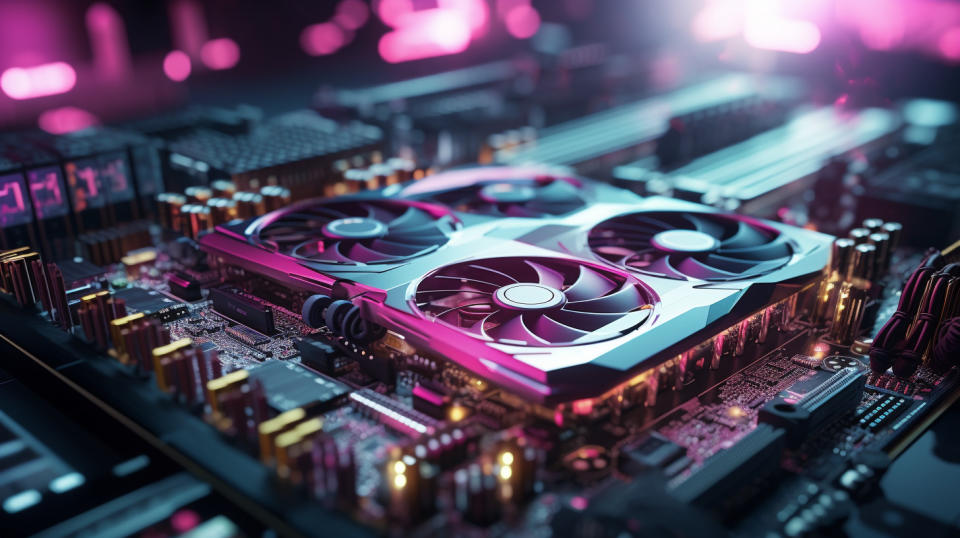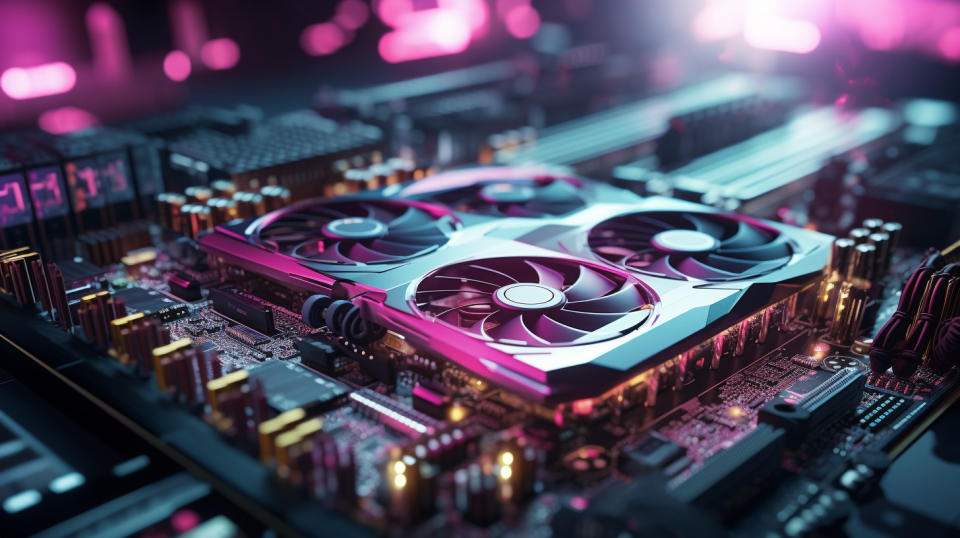We recently compiled a list of Morgan Stanley’s Best Stock Picks: 15 Stocks To Own For 2025. In this article, we are going to take a look at where NVIDIA Corporation (NASDAQ:NVDA) stands against Morgan Stanley’s other stock picks.
The tail end of 2024 is seeing a market shift in the stock market as the Federal Reserve has finally signaled that interest rate cuts are on the horizon. This means that cheaper capital might be on the horizon, with the rate cuts coming just as the labor market starts to feel the pinch through lower growth.
It also means that consumer spending can pick up if economic output remains robust. For investors, it creates an opportunity to gain an early foothold into stocks that could benefit from the new environment. On this front, investment banks have been analyzing the situation diligently for quite some time.
One bank that’s out with regular reports is Morgan Stanley. It releases monthly reports that cover the latest trends in the economy and the stock market. The bank’s August report covered some recent trends. It shared that the labor market was one of its most closely watched economic indicators as it was “vulnerable to a further deceleration in economic activity.” To explain why, the bank shared that US excess labor supply, that is the demand minus supply, was at pre pandemic levels that had sustained since 2018. This implies that employers no longer have the incentive to offer lucrative pay packages to attract workers, which in turn leads to less money flowing into the economy to contribute to inflation.
MS added that the three month national unemployment average was 0.5% above the 12 month average, which is a warning bell for the economy. This is because according to one of the most widely used recession indicators, the Sahm Rule, a recession has started once the rate is 0.5% or higher than the 12 month average. MS is not the only one that is ringing warning bells on this front, as JPM also confirmed in early August that the rule was triggered when the unemployment rate jumped to 4.3%. However, it did add that we “do not think a recession is imminent” and “remain constructive on U.S. equities despite increased volatility, and see opportunity to lock in rates before they fall.”
SEE ALSO 15 Best European AI Stocks According to Morgan Stanley and Best Humanoid Robot Stocks According to Morgan Stanley
Returning to MS, it also sees an opportunity in the battered commercial real estate market. It cites the commercial real estate cap rate, which is the rate of return based on its income generation capability, to argue that commercial real estate valuations are currently depressed enough to warrant an investment. The office real estate market had a cap rate of 9% in March 2024 as per MS, for a two percentage point and three percentage point lead over retail and residential real estate, respectively. As for the stock market, the bank shared in August that it still prefers large cap stocks (an important point as you’ll find out when you check out the stocks in this piece).
The bank believes that small caps “are lower in quality, more volatile and carry greater exposure to cyclical sectors relative to large cap,” meaning that their outperformance “requires economic growth acceleration with lower interest rates.” MS warned that “softer economic data may constrain” small cap performance. In terms of data, it argues that small cap performance is dependent on bond yields. This data set shows that when we assume an index value of 100 for US small caps had led benchmark S&P stocks except the Magnificent 7 at a time when 10 year US bond yields were around 1.5% in July 2021, the indexed returns dropped to 90 in July 2023 when the yields were approximately 4.3%.
August’s final week was pivotal for the stock market as Fed Chair Jerome Powell finally signaled that the time for interest rates had come. “The time has come for policy to adjust,” stated Powell at Jackson Hole, Wyoming. “The direction of travel is clear, and the timing and pace of rate cuts will depend on incoming data, the evolving outlook, and the balance of risks,” he added.
Following the Fed Chair’s remarks, MS was out with its September report. Commenting on the economy, the bank shared that it does not “believe the economy is set to accelerate over the next few months, which makes the S&P 500 around 5650 our near-term upper bound. At the same time, the economy is not collapsing, which makes 5200 attractive and 5350 seem fair. We plan to trade around the ranges.” MS also shares key details for the unemployment rate, which are important when analyzed in tandem with the Sahm Rule. It comments that higher immigration “may be supporting a higher labor force participation rate, which in turn would contribute to a higher reported unemployment rate. From this perspective, a higher unemployment rate is not signaling weakness but rather an increase in the labor supply that would help bring inflation down without affecting growth.”
Subsequently, the bank believes that the percentage of total unemployed accounted for by people who lost their jobs (Job Losers) and the number of total layoffs (Challenger Layoffs) might be more relevant when analyzing the labor market. Job Losers currently sit at 50%, while Challenger Layoffs are less than 50,000 after having jumped to 100,000. In short, this paints a more robust labor market picture that might not signal a recession as the Sahm Rule might have suggested.
Remaining bearish on small caps, it believes that the “window for small cap outperformance is too narrow – requiring “Goldilocks” growth and inflation.” This sentiment is also echoed in the bank’s Vintage Values 2025 stock report, where it comments that its strategists “currently recommend avoiding small caps, and Vintage Values 2025 reflects that view. It skews heavily toward large-cap stocks: 80% of the names are classified as either mega-cap or large-cap.” Mind you, this sentiment was also echoed in the 2024 report, verbatim.
Our Methodology
To make our list of MS’ top stocks for 2025, we ranked MS’ Vintage Value 2025 stock picks by their share price percentage upside based on the bank’s price target.
For these stocks, we also mentioned the number of hedge fund investors. Why are we interested in the stocks that hedge funds pile into? The reason is simple: our research has shown that we can outperform the market by imitating the top stock picks of the best hedge funds. Our quarterly newsletter’s strategy selects 14 small-cap and large-cap stocks every quarter and has returned 275% since May 2014, beating its benchmark by 150 percentage points. (see more details here).

A close-up of a colorful high-end graphics card being plugged in to a gaming computer.
NVIDIA Corporation (NASDAQ:NVDA)
Number of Hedge Fund Holders In Q2 2024: 179
Share Price Target Upside: 26%
Share Price Target: $150
NVIDIA Corporation (NASDAQ:NVDA) is the world’s largest and most advanced graphics processing unit designer. Its GPUs, which offer businesses the ability to accelerate their workloads, are also key to its hypothesis. NVIDIA Corporation (NASDAQ:NVDA)’s rapid share price growth of 715% since 2023 started is built on Wall Street’s optimism of its GPUs being heavily demanded for enterprise computing use cases. Artificial intelligence is also one of these use cases, and as NVIDIA Corporation (NASDAQ:NVDA)’s shares have lost 12% since their June peak, the firm has sought to slightly shift the narrative. At a recent conference, CEO Jensen Huang shared that NVIDIA Corporation (NASDAQ:NVDA) also plays in a non AI $1 trillion market for GPUs that will help accelerate computing that has slowed down over the years due to physical limitations of CPU design. Naturally, this means that as long as NVIDIA Corporation (NASDAQ:NVDA) continues to design superior products and there is demand for them, its shares perform well. However, any inventory glut or growth in custom chips by the likes of Amazon and Meta could spell trouble.
Baron Funds mentioned NVIDIA Corporation (NASDAQ:NVDA) in its Q2 2024 investor letter. Here is what it said:
“More recently, however, we’ve entered the period of doubts and questioning, some of which is real and normal in the first stages of a new paradigm, and some of which is prompted by short sellers. Given the explosive returns of NVIDIA and other AI leaders, AI bears and fear mongers have been comparing the current AI market winners with the internet bubble of the late 1990s/early 2000s, and NVIDIA’s stock move today with Cisco’s back then. First, while many stocks were trading at nosebleed valuations and on made up metrics (such as price per eyeballs) before the bursting of the internet bubble, as we’ve said many times, the internet proved to transform our world and create the digital age we are now living in. Second, while NVIDIA’s stock price inflection has been nothing short of unprecedented for a company of its size, it was fueled almost entirely by explosive growth in revenues, earnings, and cash flows– not multiple expansion. Over the last 12 months, NVIDIA’s stock has eectively tripled, but its forward P/E multiple has remained essentially flat, because NVIDIA blew away Wall Street expectations despite being covered by over 60 sell-side analysts, who have increased their forward projections every single quarter. In my career, the only comparative analogue is when Apple first introduced the iPhone and stunned Wall Street with its growth. In contrast, most of Cisco’s move in the late 1990s was due to multiple expansion. At its peak, Cisco traded at a P/E ratio over 130 times, more than quadruple its five-year average of 37 times. At the end of the second quarter, NVIDIA traded at a P/E ratio of 40 times, equal to its five-year average, and at a P/E to growth (or PEG) ratio for 2025 of 0.8 times, as consensus expectations are for NVIDIA to grow earnings per share 40% next year.
Moreover, investor concerns have arisen about the financial impact AI is having and whether surging capital expenditures (capex) across the technology landscape, particularly the large cloud players (Microso, Google, Amazon, and Meta), known as the hyperscalers, will be justified and earn reasonable returns on invested capital (ROIC). First, the adoption and penetration of new technology typically traces a classic S-curve–or more precisely, in our view, a series of S-curves or phases. For at least the past year and a half, we’ve been in what might be called the AI infrastructure- build phase – building the AI factories, as NVIDIA CEO Jensen Huang has articulated it, and this phase has been dominated by the infrastructure- layer players – the accelerated computing chips suppliers like NVIDIA and Broadcom, as well as data center, cloud infrastructure and energy companies. The hyperscalers, other enterprises, and sovereign entities investing ahead understand that if you want to be in the AI game, you must invest now – build the infrastructure, build the factories – or else you’ll find yourselves disrupted on the sidelines or playing catch up in the biggest game, the most important race in a technology generation. Only those who invest today even have the chance to be the winners of the future.”
Overall NVDA ranks 3rd on our list of Morgan Stanley’s best stock picks for 2025. While we acknowledge the potential of NVDA as an investment, our conviction lies in the belief that some AI stocks hold greater promise for delivering higher returns and doing so within a shorter timeframe. If you are looking for an AI stock that is more promising than NVDA but that trades at less than 5 times its earnings, check out our report about the cheapest AI stock.
READ NEXT: $30 Trillion Opportunity: 15 Best Humanoid Robot Stocks to Buy According to Morgan Stanley and Jim Cramer Says NVIDIA ‘Has Become A Wasteland’.
Disclosure: None. This article is originally published at Insider Monkey.









